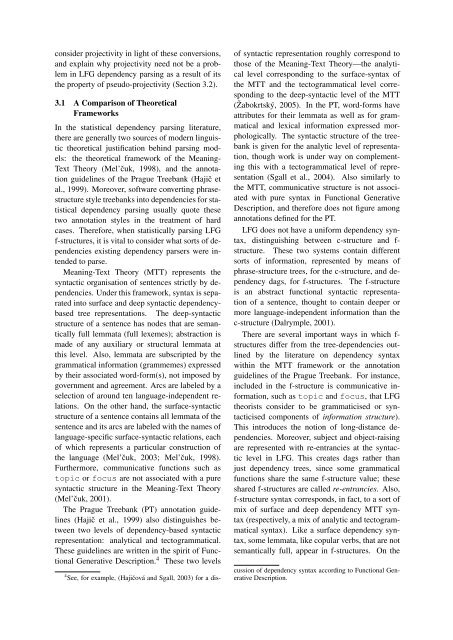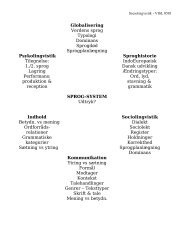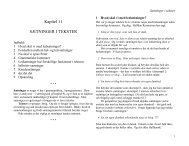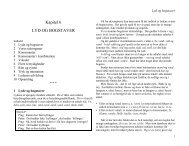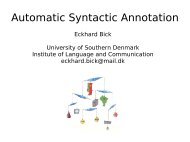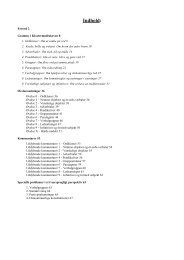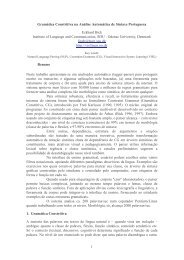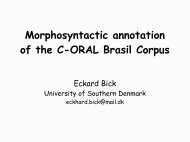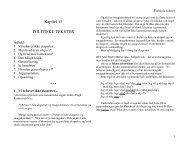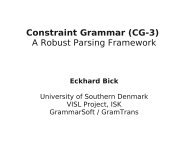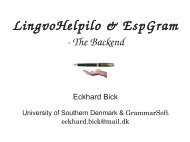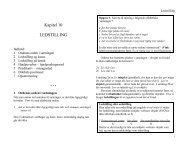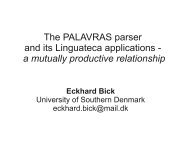Converting Acquired Lexical Functional Grammar F-Structure ... - VISL
Converting Acquired Lexical Functional Grammar F-Structure ... - VISL
Converting Acquired Lexical Functional Grammar F-Structure ... - VISL
You also want an ePaper? Increase the reach of your titles
YUMPU automatically turns print PDFs into web optimized ePapers that Google loves.
consider projectivity in light of these conversions,<br />
and explain why projectivity need not be a problem<br />
in LFG dependency parsing as a result of its<br />
the property of pseudo-projectivity (Section 3.2).<br />
3.1 A Comparison of Theoretical<br />
Frameworks<br />
In the statistical dependency parsing literature,<br />
there are generally two sources of modern linguistic<br />
theoretical justification behind parsing models:<br />
the theoretical framework of the Meaning-<br />
Text Theory (Mel’čuk, 1998), and the annotation<br />
guidelines of the Prague Treebank (Hajič et<br />
al., 1999). Moreover, software converting phrasestructure<br />
style treebanks into dependencies for statistical<br />
dependency parsing usually quote these<br />
two annotation styles in the treatment of hard<br />
cases. Therefore, when statistically parsing LFG<br />
f-structures, it is vital to consider what sorts of dependencies<br />
existing dependency parsers were intended<br />
to parse.<br />
Meaning-Text Theory (MTT) represents the<br />
syntactic organisation of sentences strictly by dependencies.<br />
Under this framework, syntax is separated<br />
into surface and deep syntactic dependencybased<br />
tree representations. The deep-syntactic<br />
structure of a sentence has nodes that are semantically<br />
full lemmata (full lexemes); abstraction is<br />
made of any auxiliary or structural lemmata at<br />
this level. Also, lemmata are subscripted by the<br />
grammatical information (grammemes) expressed<br />
by their associated word-form(s), not imposed by<br />
government and agreement. Arcs are labeled by a<br />
selection of around ten language-independent relations.<br />
On the other hand, the surface-syntactic<br />
structure of a sentence contains all lemmata of the<br />
sentence and its arcs are labeled with the names of<br />
language-specific surface-syntactic relations, each<br />
of which represents a particular construction of<br />
the language (Mel’čuk, 2003; Mel’čuk, 1998).<br />
Furthermore, communicative functions such as<br />
topic or focus are not associated with a pure<br />
syntactic structure in the Meaning-Text Theory<br />
(Mel’čuk, 2001).<br />
The Prague Treebank (PT) annotation guidelines<br />
(Hajič et al., 1999) also distinguishes between<br />
two levels of dependency-based syntactic<br />
representation: analytical and tectogrammatical.<br />
These guidelines are written in the spirit of <strong>Functional</strong><br />
Generative Description. 4 These two levels<br />
4 See, for example, (Hajičová and Sgall, 2003) for a dis-<br />
of syntactic representation roughly correspond to<br />
those of the Meaning-Text Theory—the analytical<br />
level corresponding to the surface-syntax of<br />
the MTT and the tectogrammatical level corresponding<br />
to the deep-syntactic level of the MTT<br />
( ˇZabokrtsk´y, 2005). In the PT, word-forms have<br />
attributes for their lemmata as well as for grammatical<br />
and lexical information expressed morphologically.<br />
The syntactic structure of the treebank<br />
is given for the analytic level of representation,<br />
though work is under way on complementing<br />
this with a tectogrammatical level of representation<br />
(Sgall et al., 2004). Also similarly to<br />
the MTT, communicative structure is not associated<br />
with pure syntax in <strong>Functional</strong> Generative<br />
Description, and therefore does not figure among<br />
annotations defined for the PT.<br />
LFG does not have a uniform dependency syntax,<br />
distinguishing between c-structure and fstructure.<br />
These two systems contain different<br />
sorts of information, represented by means of<br />
phrase-structure trees, for the c-structure, and dependency<br />
dags, for f-structures. The f-structure<br />
is an abstract functional syntactic representation<br />
of a sentence, thought to contain deeper or<br />
more language-independent information than the<br />
c-structure (Dalrymple, 2001).<br />
There are several important ways in which fstructures<br />
differ from the tree-dependencies outlined<br />
by the literature on dependency syntax<br />
within the MTT framework or the annotation<br />
guidelines of the Prague Treebank. For instance,<br />
included in the f-structure is communicative information,<br />
such as topic and focus, that LFG<br />
theorists consider to be grammaticised or syntacticised<br />
components of information structure).<br />
This introduces the notion of long-distance dependencies.<br />
Moreover, subject and object-raising<br />
are represented with re-entrancies at the syntactic<br />
level in LFG. This creates dags rather than<br />
just dependency trees, since some grammatical<br />
functions share the same f-structure value; these<br />
shared f-structures are called re-entrancies. Also,<br />
f-structure syntax corresponds, in fact, to a sort of<br />
mix of surface and deep dependency MTT syntax<br />
(respectively, a mix of analytic and tectogrammatical<br />
syntax). Like a surface dependency syntax,<br />
some lemmata, like copular verbs, that are not<br />
semantically full, appear in f-structures. On the<br />
cussion of dependency syntax according to <strong>Functional</strong> Generative<br />
Description.


